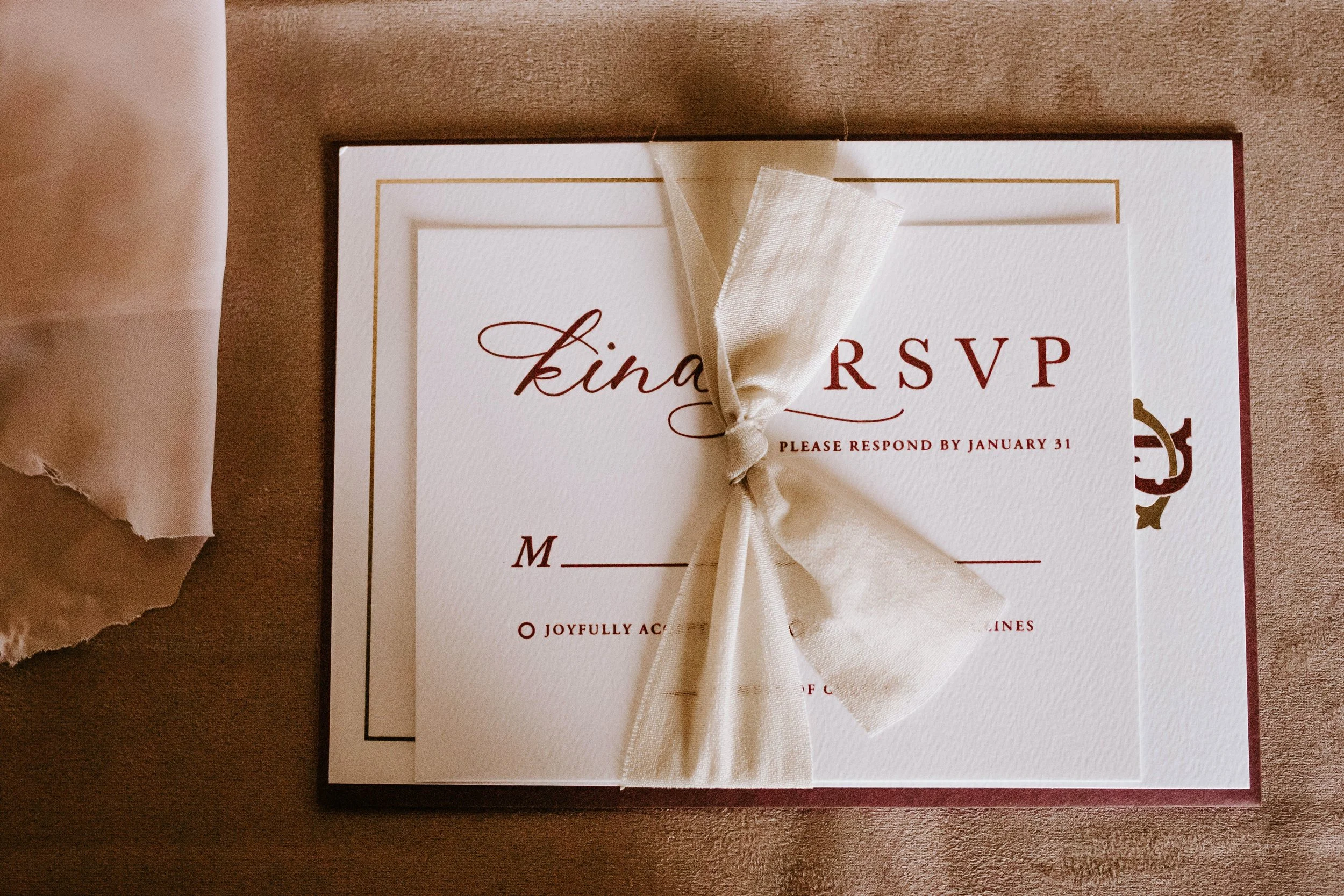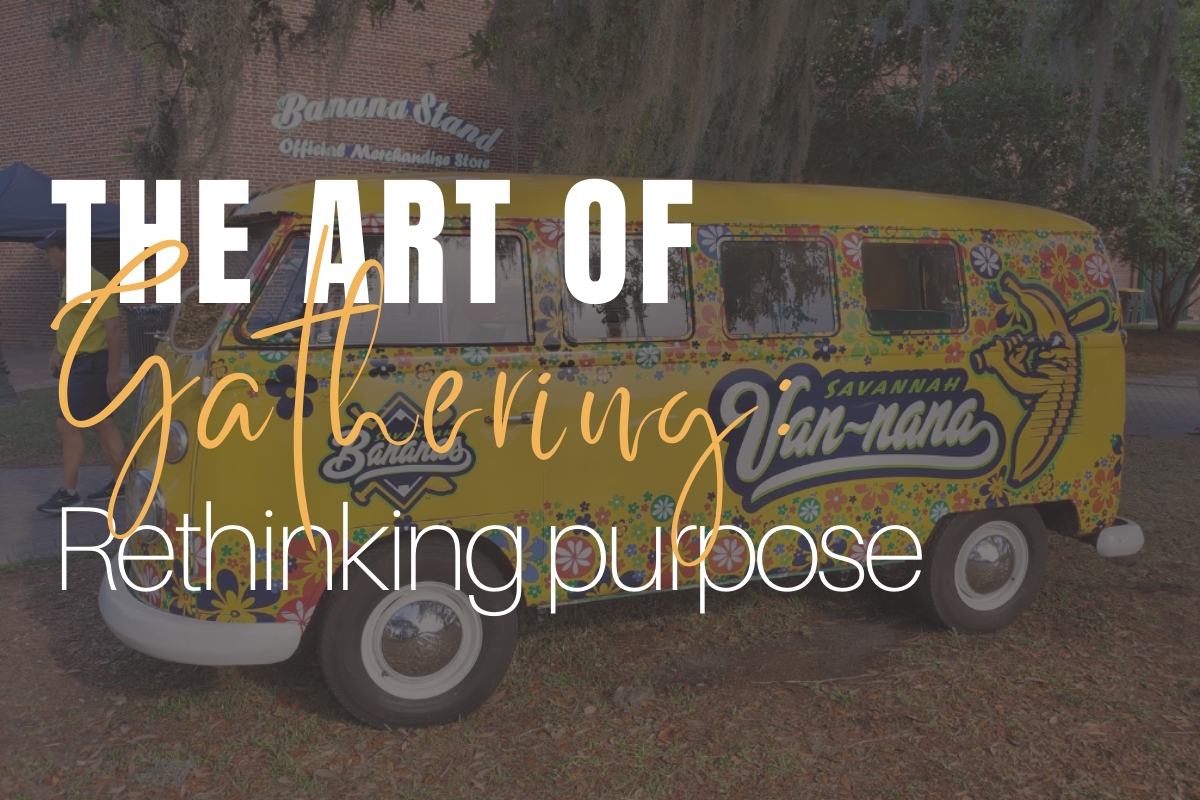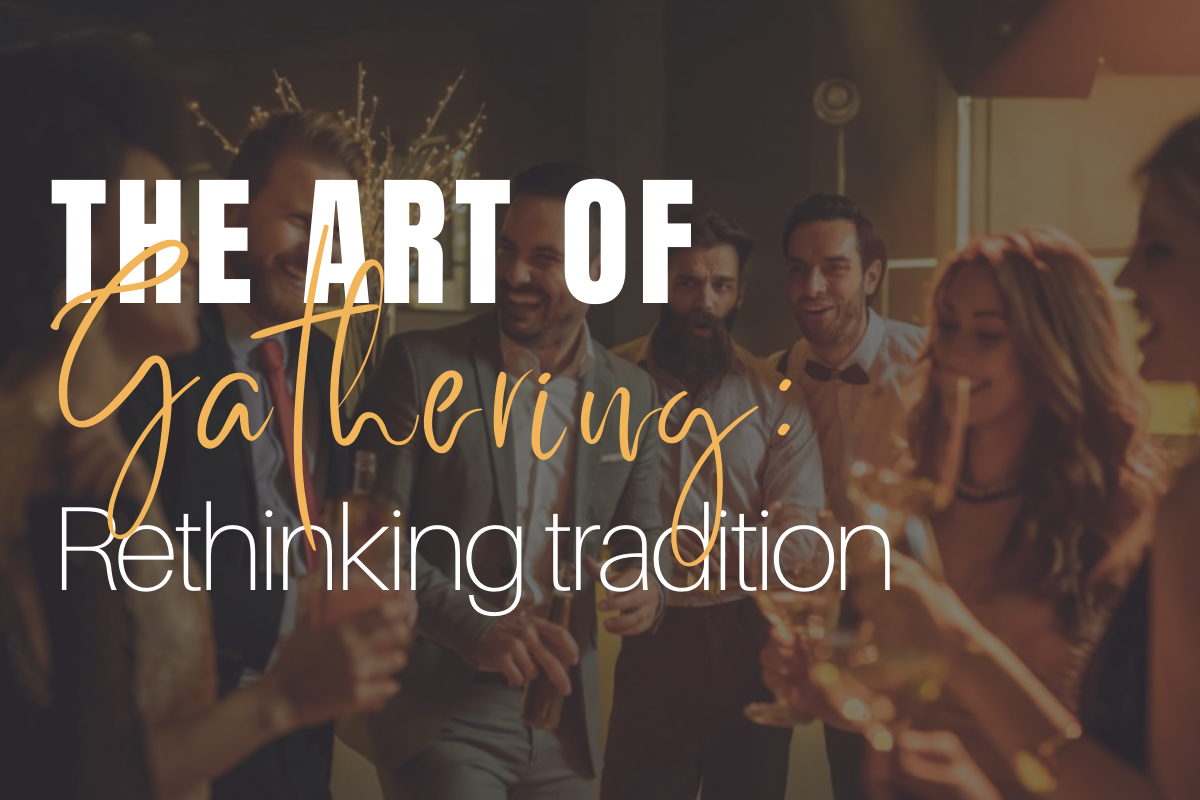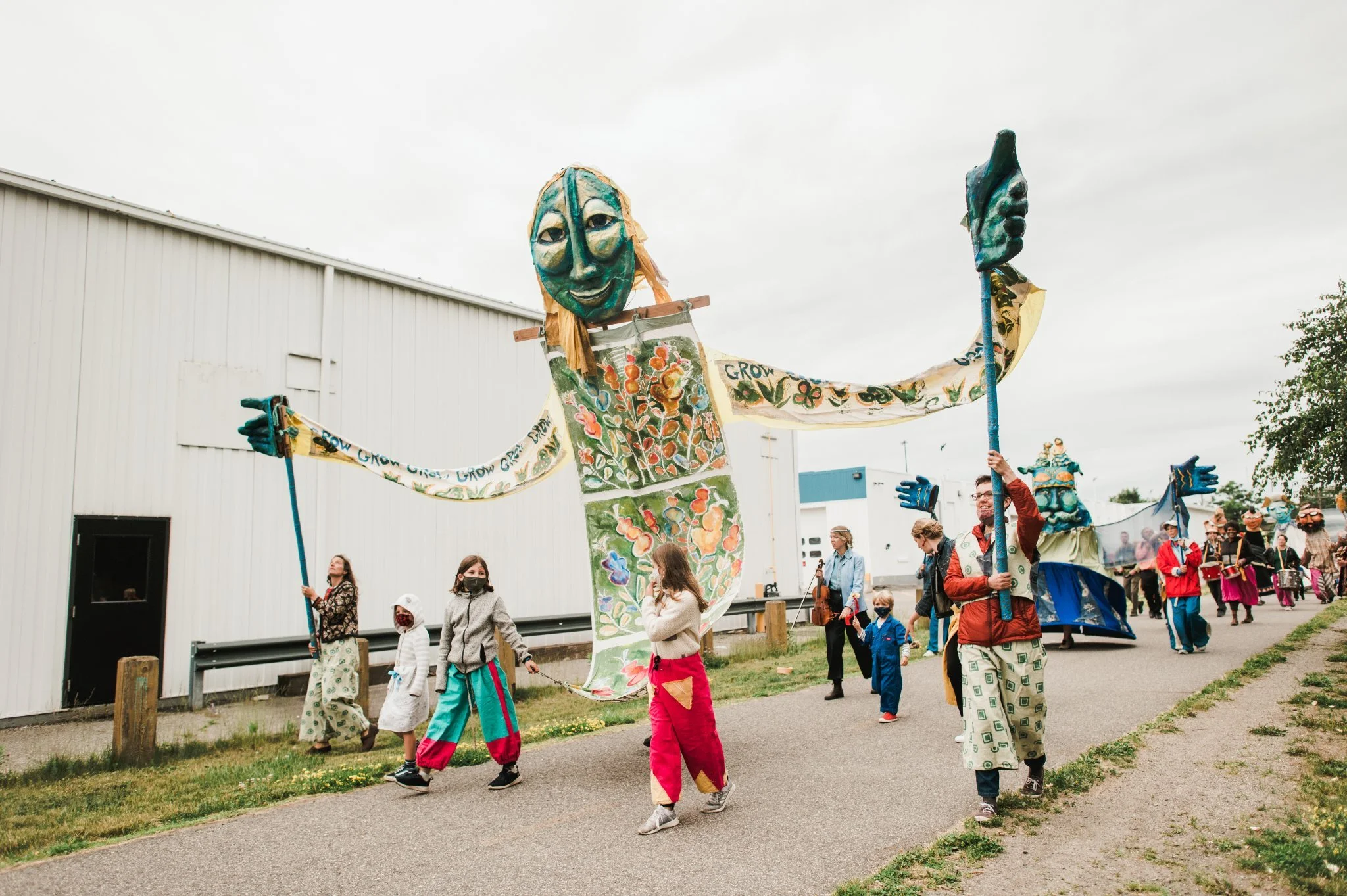The Art of Gathering: Rethinking the role of host
It’s time to overhaul our thinking around what a classical music concert should be. We’ve based our traditions on nineteenth century societal hierarchy for far too long.
As arts organizations begin to adapt to their twenty-first century audiences, it’s crucial to consider what it means to invite consumers to partake in their offerings.
“When art moves us,” writes Metcalf Fellow David Maggs, “its capacity to do so is rooted in a recognition that we are encountering more than the imagination of the artist.” Art, writes Maggs, is the result of both an expressive effort, on the part of the artist, and an attentive effort, on the part of the patron. It’s a “negotiation carried out in good faith between artist and world.”
A similar negotiation plays out on a larger scale whenever an arts organization hosts an event, concert, or exhibit. As Priya Parker explains in The Art of Gathering, every form of gathering is, in essence, a social contract between the attendee and the host.
The attendee purchases a ticket and arrives with preset expectations for what they are about to experience. In exchange, the host is responsible for actively facilitating the experience in a way that satisfies these expectations.
As Parker sees it, providing the venue and the content, and even food and drink is not enough. If you neglect “your proper powers as host,” Parker writes, you are failing your guests.
The traditional orchestral concert, for example, is based in nineteenth-century ideas of social distinction and refinement. Implicit expectations about etiquette and musical knowledge often result in little to no communication from the stage, and patrons are left to fend for themselves when it comes to interacting with the art and with their fellow attendees.
Leaving guests alone and providing minimal facilitation—a practice which Parker has dubbed “chill hosting”—doesn’t serve you or your guests. It isn’t welcoming—particularly for Outsiders or newcomers—and it doesn’t cultivate a meaningful experience that might convince consumers to return.
So what do our twenty-first century audiences need? How can arts organizations properly fulfill the role of host, to ensure that their gathering is more meaningful, more human-centered, and more rewarding?
It’s time to start wielding “generous authority,” says Parker. Translation: Arts organizations must begin to take a more active role in protecting, equalizing, and connecting their guests.
To start, instead of assuming that 21st century consumers are familiar with traditional etiquette and the intricacies of your art form, assume that the majority of your patrons are Outsiders. Filter every decision (program notes, repertoire, audience experience) through this assumption.
Centering the experience of your Outsiders means rejecting tradition in favor of innovation—being more human centered and a lot less product centric. How? Lean in to a meaningful purpose that goes deeper than just “art for arts sake” and allow that purpose to guide you.
When it comes to assuming your proper powers as host, Parker highlights seven elements that a good host must consider in order to create a truly meaningful and memorable gathering:
Naming
Naming your gathering is the first step to drafting the social contract for your gathering. Yes, even your event’s title is a crucial opportunity that can help frame the event for your newcomers. The most effective titles signal the purpose of the gathering, helping your prospective attendees know what to expect and how to show up.
So skip the flowery, formal language and opt for terminology that is relevant (familiar) to Outsiders.
For example, the Fox Valley Symphony Orchestra titles their annual outdoor concert at Fox Cities Stadium Brats, Beer, and Beethoven. No confusion here about what to wear and what to expect!
Marketing
"Before your event starts,” writes Parker, “it has begun."
The invitation to a gathering—for the arts world, that’s our marketing—is your second opportunity to frame the gathering’s social contract. How can you set appropriate expectations? How can you make Outsiders feel more welcome? How can you prepare your prospective guests to get maximum value from your event? These are questions that must be addressed.
The Metropolitan Opera recently posted a fantastic “day in the life” video featuring their Medea star, Sondra Radvanovsky. This type of video helps Outsiders understand and appreciate just how much work goes into preparing for a performance, which may help them appreciate the actual performance even more.
You can find more examples of outstanding arts marketing at the Arts Marketing Hall of Fame.
Priming
As host, it is your responsibility to prepare your guests to fully engage with—and benefit from—your event. What simple task can you ask of your guests that cultivates ownership and helps them connect their own world to your gathering?
The Columbus Symphony provides curriculum materials and curates a Spotify playlist for each of their Young Peoples’ Concerts.
The Vancouver Opera created an immersive podcast on Bizet’s life and times to prepare their audiences for their upcoming performance of The Pearl Fishers.
But priming can also be as simple as sending an email to your ticketed guests, asking a question that relates to the content or theme of your concert and gets them thinking about something relevant in their own life.
Priming with Outsiders in mind also means making implicit expectations explicit. Decide what traditions are vital to keep, what traditions no longer serve your art or your audiences, and what new traditions might help to protect, equalize, and connect your guests. Then, advertise your expectations. Put them in your marketing, add them to your website, create signage for the event.
Creating these explicit guidelines (Parker calls them “pop up rules”) helps to provide clarity on expectations and leads to greater psychological safety for your patrons. They “allow for an experimental spirit in gathering, whereas etiquette is that spirit’s enemy.” Give your guests permission to break the mold!
Before a recent David Bowie concert, the Perth Symphony announced: “We encourage you to take photos and videos and share using #perthsymphony—and dancing in the aisles or singing loudly is also encouraged.”
Emily Isaacson of Classical Uprising makes a point of telling her audiences: “No shushing if someone claps at the ‘wrong’ time. In fact, you should clap or whoop or cheer whenever you feel moved by the music.” This is a great example of protecting the guests who are new or unfamiliar with traditional concert etiquette.
(You can find more examples of pop up rules in this earlier article.)
Ushering
Your guests are arriving at your event after a stressful day of work, a frustrating commute, an emotional handoff to the babysitter. A good host helps their guests transition from their world to yours.
For example, as guests arrive at Garsington Opera, they are ushered into the performance space with a brass fanfare. (Who doesn’t want to feel like royalty for a few minutes?)
Classical Uprising’s Carnival Concert begins with a twenty-minute parade of giant puppets, stilt walkers, and drag queens, which leads the audience into the concert and sets the tone for the family-friendly event.
Launching
In the first few minutes of a gathering, writes Parker, guests are looking around and assessing the situation. “What do I think of this gathering? Am I in good hands? Is the host nervous? Should I be? What’s going to happen here? Is this worth my time? Do I belong?” Your task is to make your guests feel warmly welcomed while simultaneously sparking a sense of awe.
Decide in advance that you will launch the event not with logistics, but with a brief introduction that “sear[s] your gathering’s purpose into the minds of your guests.”
For example, have you advertised your concert as an opportunity to unplug and recharge? Start with a brief guided meditation led by a skilled and charismatic expert. Is your event billed as an opportunity to come together around a social issue? Invite a local child or leader to open the event by reading a relevant poem (their own or otherwise.)
Connecting
How can you help your audiences connect with each other? (I’m reminded of the Episcopal tradition of Passing the Peace. Is there a secular equivalent we could establish for arts patrons?)
In The Art of Gathering, Parker provides the example of a party host who announces to her dinner guests that they have one job that evening: to make two new friends. This explicit instruction breaks down the barriers that often crop up in a gathering full of strangers. As Parker writes, “people make an effort to talk to new people…because she’s given them the social cover to do so.”
This same party host also has a practice of assigning roles to each dinner guest. One guest might be in charge of making sure everyone has full glasses of water; another might be in charge of the wine. It’s a powerful icebreaker. Being explicitly assigned a “job” gives each guest something to do and an excuse to talk to their fellow partygoers.
A third practice requires each guest to make sure that their neighbor has a full plate of food—rather than helping themselves. “This small reorientation shifted the dynamic of the room,” writes Parker. “Instead of worrying about themselves, the guests relaxed…[it] nudged people into relationships of care, even though many of them had just met.
How might these three ideas play out at a cultural event like an orchestral concert?
We must not forget that hosting opportunities extend beyond the concert hall. Holly Mulcahy, concertmaster of the Wichita Symphony Orchestra and their Partner for Audience Engagement, has cultivated a vibrant following on social media (2.1k on Twitter, 5.8k on Facebook, and 1.2k on Instagram.) She posts regularly to stay connected to these followers—but also to connect them to each other. For example, before a recent concert, Holly posted an invitation for her followers to join her after the concert for a treat at the local ice cream parlor. In her post, she even included photos of the shop, with directions, parking instructions, and even a list of available ice cream flavors, in order to relieve any anxieties her guests might have about joining.
Similarly, the Portland Symphony Orchestra (Maine) hosts a Symphony & Spirits event, where guests are invited to meet up at a neighborhood bar after the concert. The ticket includes the cost of entry to the PSO performance and one drink token at the venue.
Closing
Just as a good host helps their guests transition into their world—they also help them transition back into daily life. Whatever you do, don’t end your gathering with logistics or thank yous. If these are necessary, schedule them before your closing activities. A meaningful gathering requires a meaningful ending. You’d never close a yoga class without the namaste!
Create a closing ritual that feels authentic and makes sense for your gathering. How? Find a way to take stock of what your guests have experienced together. Connect your audiences to each other one last time. Then, find a way to share with them how they might carry the experience into their daily lives. As Parker writes, “help them find a thread to connect the world of the gathering to the world outside.”
As David Magg writes, "Art has a unique capacity to break open many of the cognitive, linguistic, and perceptual habits (of a Western rationalist paradigm) that structure and constrain standard ways of making sense of ourselves. If the “crack in everything” is how the light gets in, art is a particularly generative means by which those cracks are formed."
If we truly believe that art has the power to transform how we make sense of ourselves and our world, we must commit to stepping into our proper role as host; working to create a memorable and meaningful event every time we gather. It’s a heavy responsibility that goes hand in hand with being an artist or an arts administrator—but the rewards are pure magic.





Arts patrons are often left to fend for themselves when it comes to interacting with the art and with their fellow attendees. But 'chill hosting', warns Priya Parker, isn’t welcoming, and it doesn’t cultivate a meaningful experience that keeps them coming back. So how can arts organizations be better hosts?